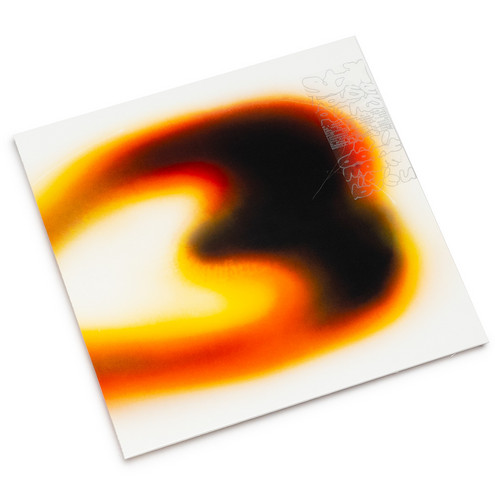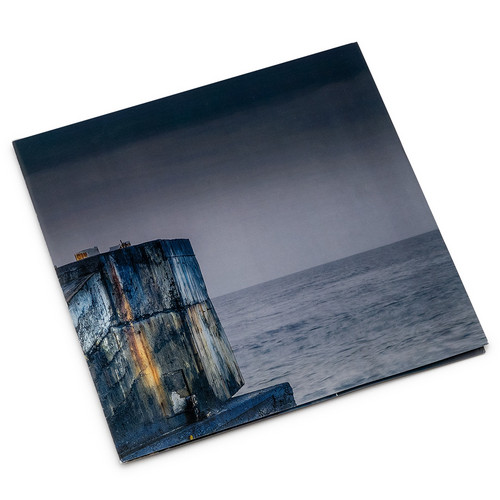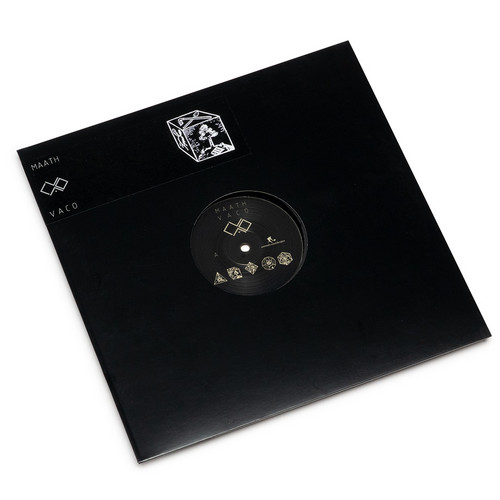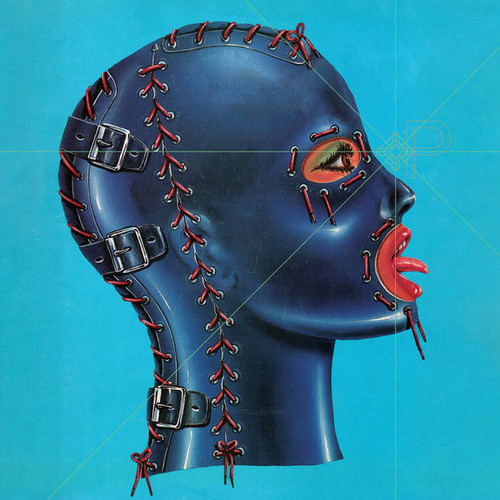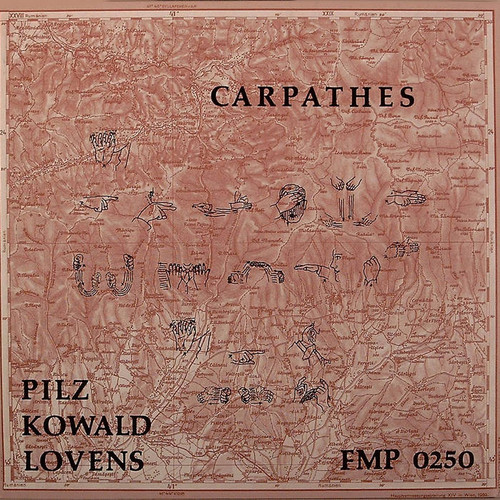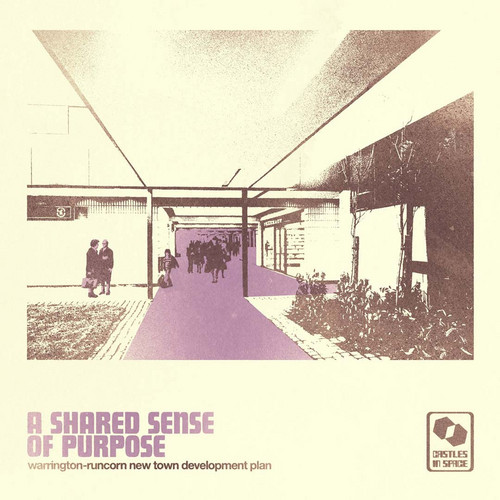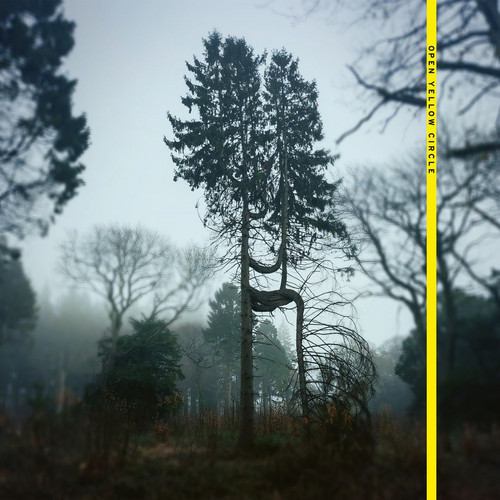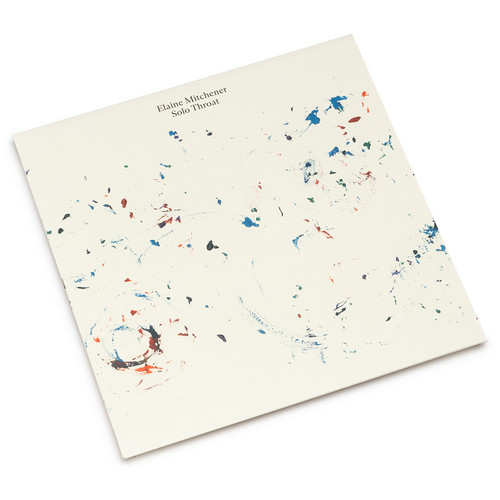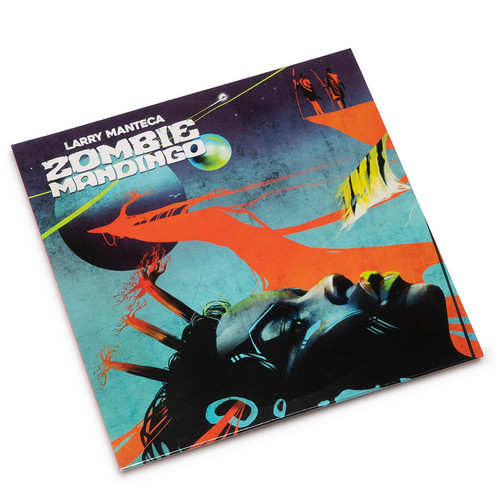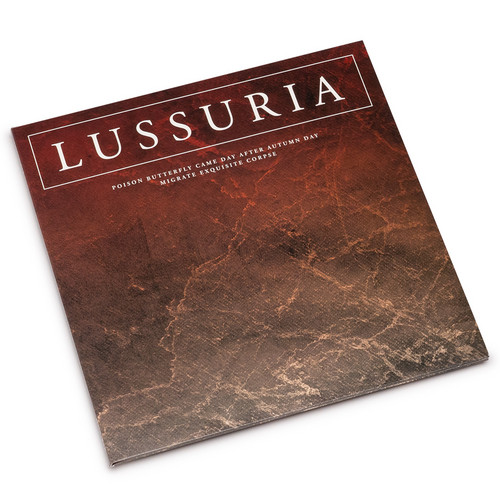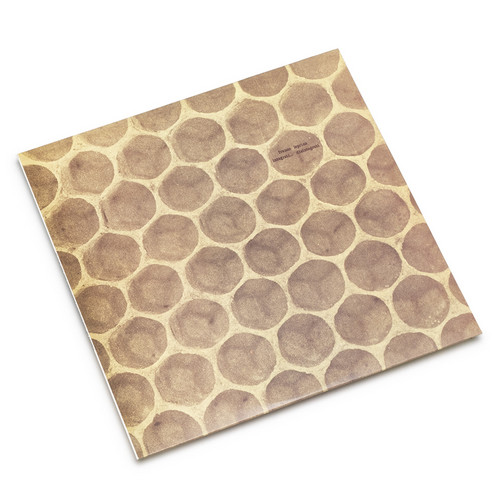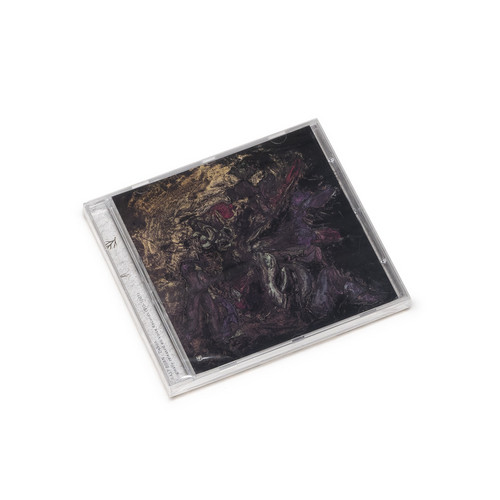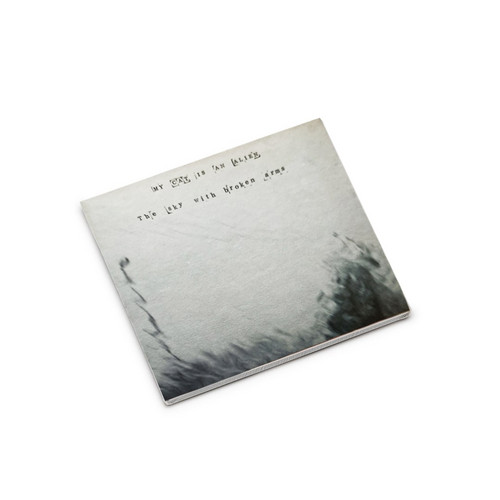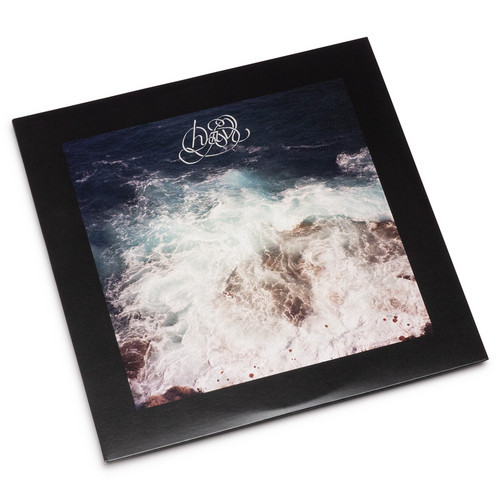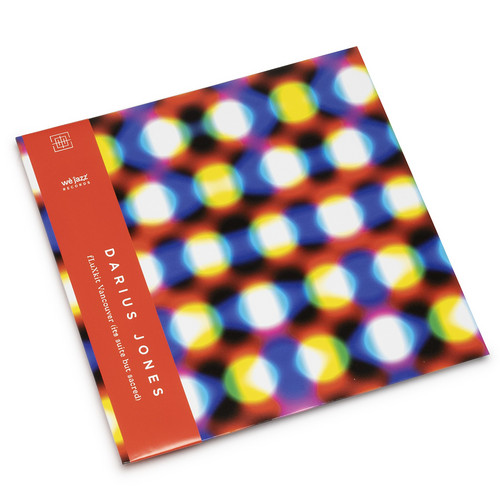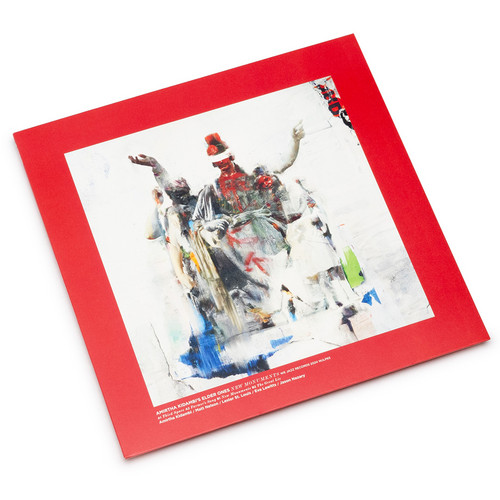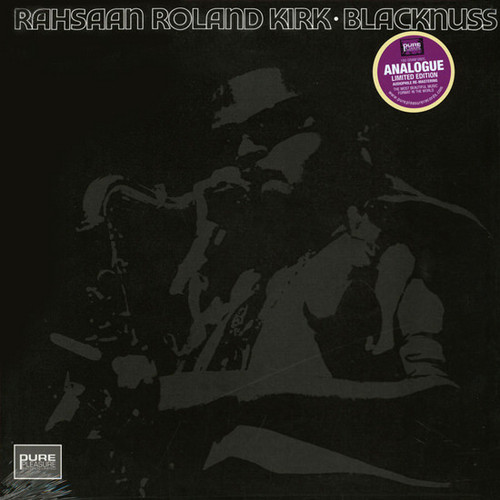Back in stock
If I don’t make it, I love u
‘If I don't make it, I love u’ is Still House Plants’ third LP and the fullest embodiment of their sound to date. Where ‘Fast Edit’ formed with quick attachment and jump cuts, ‘If I don't make it’ is shaped by persistence - a commitment to the songs that makes the music solid, warmer and accepted. Marking the trio’s decade of friendship, this is the first record written whilst all live in the same city since 2017's ‘Assemblages’. The band rehearsed it relentlessly, playing for nobody except them…
Ilona Staller
In the late 1970s, Ilona Staller aka Cicciolina’s started her parallel career in the music field. Here's the reissue of her first LP.
Impressioni Organizzate di Ansie Liquide
Huuuge Tip! **100 numbered copies in poster cover with printed inner sleeve, 180g audiophile vinyl** Since its launch roughly five years ago, the Rome based imprint, Anomala Soundscapes, has quietly mined Italy’s rich context of experimental electronic and electroacoustic music, focusing their energies toward the densities of meaning and possibility activated by these practices and territories of sound, via releases by artists like Mark Schaub, Daniele Pecorelli, and Rumore Austero. The label’s …
Vaco
Tip! **100 numbered copies in black 'disco bag' cover with sticker, 180g audiophile vinyl** Active on the scene for more than two decades, Maath is the moniker of Marco Ramassotto, who briefly came to note during the early 2000s as a member of the ritualistic, musical excursions of Biasthon, as well as working under the pseudonym of Mark Schaub. Despite Maath’s many years of activity, Ramassotto has only produced a tiny number of releases under that guise, most notably “No Survivors for the New …
Oxidation
*250 copies limited edition* For the first time on vinyl, the Prurient long form cassette ‘expunged from the record’ final shrine before the closing of the now highly controversial and inimitable brick and mortar basement recordings. Remastered for vinyl for ultra caustic stimulating misery going back to a time in new york that could only be described as ‘unsub’.
Carpathes
"Percussionist Paul Lovens turns in some exemplary work on Carpathes, joined by Michel Pilz (bcl) and Peter Kowald (b). Actually it is mostly Pilz' date as he appears throughout the record either in solo, trio or duo with Kowald. But it is Lovens who most impresses me here as he hammers, rings, jingles the percussion, managing to both give rhythmic freedom and abstraction while implying a more traditional rhythm and he sustains himself very well. Actually the rhythm is constantly outstanding in …
A Shared Sense of Purpose
The first transmission from forthcoming Warrington-Runcorn New Town Development Plan's new album, "Your Community Hub"
"A Shared Sense of Purpose" looks at the small community centres that helped Runcorn become a five minute city, long before the current discussion about fifteen minute cities. The idea that the larger town would be divided into smaller centres, each with a set of facilities at the heart, and designed to be within five minutes walk of anyone’s front door. It looks at the faciliti…
New Meridien
In 1994, UK ambient pioneers O Yuki Conjugate recorded their landmark Equator album. To mark the 30th anniversary of this musical milestone, many of the same personnel – Roger Horberry (co-founder of O Yuki Conjugate), Dan Mudford (ex-Sons of Silence and co-creator of the Shaun of the Dead soundtrack), Joe Lamb (ex-Sons of Silence) and Malcolm McGeorge – came together to make New Meridian, reflecting the range of influences they’ve picked up over the intervening years.
Generously described as “a…
Halfway to a Threeway
2024 stock. "Well, never mind--as long as people love it, here's another few sides of long-ago and far-away Jim O'Rourke back on vinyl for the first time since way back in the mid-aughties. It's the Halfway to a Threeway 12" EP back to set turntables a-spinnin'! Fans of Eureka and Insignificance (not to mention Jim's tomfoolery as part of the Loose Fur band) will appreciate the analog pressing of these four slices of the pop music party-pooper combination of folk, classic rock, smooth jazz and a…
Solo Throat
Solo Throat is the first solo LP from vocalist, composer and movement artist Elaine Mitchener. Drawing on the work of African-American and African-Caribbean poets Edward Kamau Brathwaite, Aimé Césaire, Una Marson and N. H. Pritchard, these twelve new vocal compositions disrupt semantic sense, play with the margins of lyrical translation, and give rise to new voicings. Elaine Mitchener is a veteran of vocal expression in the global Black Avant Garde, traversing free improvisation, cross-disciplin…
Zombie Mandingo
After over a decade as a digital-only album, Larry Manteca‘s Zombie Mandingo gets its first vinyl release, making a fresh comeback in a completely renewed version.
Like Manteca’s previous full-length releases, this album too is conceived as a soundtrack to a non-existent exploitation film, drawing inspiration from the classic Italian B-movies of the 1970s. This time, cinematic references encompass both the zombies found in Lucio Fulci’s horrors and the cannibalistic adventures directed by Umbert…
Poison Butterfly Came Day After Autumn Day
Supreme dark ambient, ritual musique, cold soundscapes return. First time on vinyl of what some may say is the hallmark of the recent Lussuria era this 2xLP includes the bonus tape from the special edition ‘migrate exquisite corpse’. Presented in decadent gatefold on orange/purple merge vinyl. For your autumnal listening pleasure and pain. Supreme dark ambient, ritual musique, cold soundscapes return.
Integrati... Disintegrati
It was 1977, the year when punk rock exploded in the face of disco-music, but some thinking heads in Italy managed to escape the set trends of the year and walk a totally different path. Pioneers like Franco Battiato had already been experimenting with a crash of rock and electroacoustic music since the beginning of the decade, and others like Roberto Cacciapaglia or Riccardo Zappa would explore farther in those lands, mixing acoustic instruments with the bourgeoning synth technology. Among all …
Debon
Brast Burn was a legendarily obscure Japanese ensemble that existed in the first half (I presume) of the 1970s. For many years, they were known only as an entry in the notorious Nurse With Wound list, with no way for anyone to check them out. Thus this CD. First off, I'll say that it sounds really good. One would never guess that it was a transfer from vinyl. Brast Burn has been cited/promoted at various times as the "Japanese Faust". I feel that this is incorrect. A better analogy would be to …
The Sky With Broken Arms
*2023 stock* CD in 4-panel, full-color gatefold digisleeve. Cover artwork and foreword by Roberto Opalio. Design by My Cat Is An Alien.
‘The Sky With Broken Arms’ is the brand new studio album by My Cat Is An Alien which officially opens the duo’s 20th anniversary in 2018–a year rich of exciting projects, collaborations and releases. Brothers Maurizio and Roberto Opalio have been active as radical instantaneous composers since the beginning in early 1998, their work always characterized by the w…
Vrindavan 1982
Black Truffle presents a previously unheard performance by rudra veena master Ustad Zia Mohiuddin Dagar, recorded in the North Indian city of Vrindavan at the Druhpad Samaroh festival in 1982. The great exponents of the tradition from whom Z.M. Dagar descended were all singers, and dhrupad is essentially vocal music. However, as Z.M. Dagar explained, the veena family of instruments plays an important role in the education and practice of dhrupad singers, especially as an aid to mastering the fin…
Hav
Whitney Johnson, alter-ego of psychoacoustic voyager Matchess, debuts with a new composition that meditates on the duality of the human body. An instrument that collates awesome sensory pleasures, allows us to feel, and, best of all, to hear music, it’s also forever wearing on its slow death march. Using sine waves, marimba, viola, Arp Odyssey and Halldorophone, Whitney radiates healing waves to soothe and heal our flawed, but inspiring system.
fLuXkit Vancouver (i̶t̶s suite but sacred)
Tip! A radiant manifesto of artistic freedom, fLuXkit Vancouver (i̶t̶s suite but sacred) brings together a composition in four movements written and performed by Jones on alto saxophone, long-time collaborator Gerald Cleaver on drums, and four Vancouver-based string musicians: violinists Jesse Zubot and Josh Zubot, cellist Peggy Lee and bassist James Meger; with original artwork by Stan Douglas and liner notes by poet Harmony Holiday. Commissioned by Western Front, an artist-run center for multi…
New Monuments
** Black Vinyl, inside out sleeve, 12"x12" insert with artwork, liner notes & lyrics, black polylined inner sleeve. ** Amirtha Kidambi’s Elder Ones join We Jazz Records for their third LP New Monuments. Amirtha Kidambi has long affirmed that the role of sound in the act of protest is pivotal. In the summer of 2020, the Brooklyn-based vocalist and composer was immersed in mass demonstrations across New York City in the wake of the murder of George Floyd, organizing bands to counter the violent pr…
Blacknuss
Blacknuss was a trend-setting iconic contribution to jazz. Rahsaan Roland Kirk’s creative force helped to define musical culture. From its opening bars, with Bill Salter's bass and Rahsaan's flute passionately playing Bill Withers' "Ain't No Sunshine", you know this isn't an ordinary Roland Kirk album (were any of them?). As the string section, electric piano, percussion, and Cornel Dupree's guitar slip in the back door, one can feel the deep soul groove Kirk is bringing to the jazz fore here. A…
